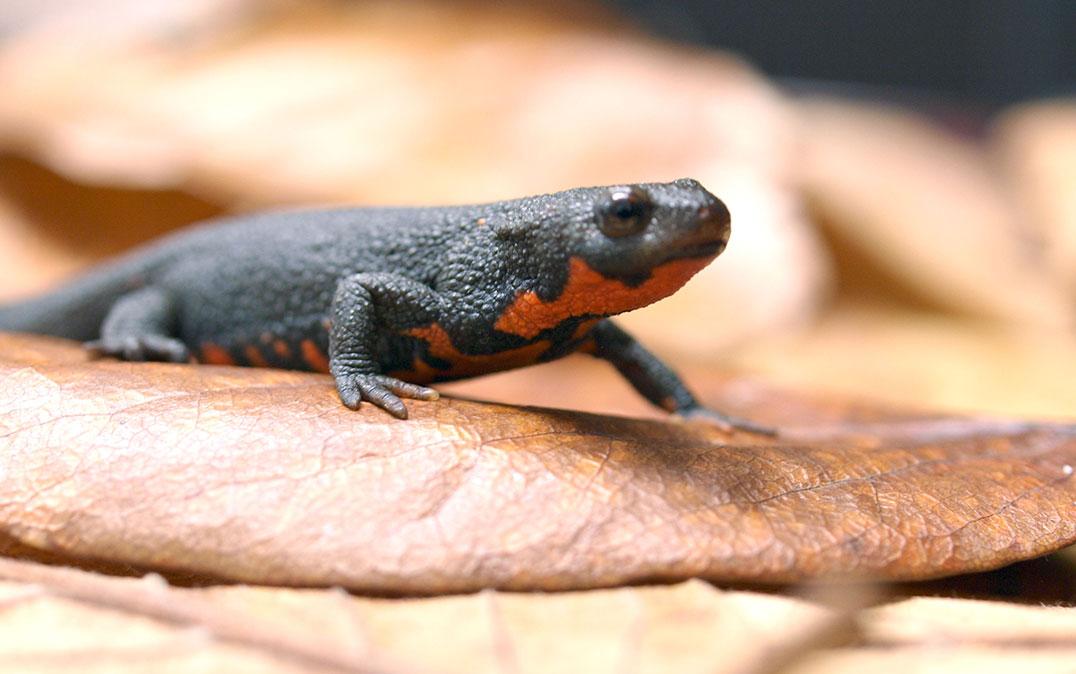Research News
Out on a Limb: The Role of Newtic1 Protein in Limb Regeneration in Adult Newts

A research group led by the University of Tsukuba finds that the Newtic1 protein contributes to the secretion of growth factors, particularly TGFβ1, in adult newt limb regeneration
Tsukuba, Japan—The animal kingdom exhibits a plethora of unique and surprising phenomena or abilities that include, for some animals, the ability to regenerate body parts irrespective of age. Now, researchers from Japan have discovered that the mechanisms behind this peculiar ability in newts have a few surprises of their own.
In a recently published study, a research group led by the University of Tsukuba has further clarified the role of a gene, Newtic1, previously discovered in adult fire-bellied newts (Cynops pyrrhogaster), and found that it plays a different role during limb regeneration than initially thought.
Newts have the unique ability to regenerate lost limbs as adults. In early life, most vertebrate animals (including humans) are able to regrow body parts or complex tissues after trauma, but lose most or all of this ability in adulthood. Instead of regenerating, the affected area undergoes healing involving scarring (the development of fibrous connective tissue in response to injury). In contrast, adult newts are thought to have a unique mechanism of cellular reprogramming that underpins their regenerative ability.
"We have been using adult fire-bellied newts as a model for new regenerative medicine," says Professor Chikafumi Chiba, senior author. "We previously identified Newtic1, an orphan gene found only in salamander families, expressed at the blastema formed on the stump of amputated newt limbs." The Newtic1 protein is expressed on polychromatic normoblasts (or PcNobs), a type of immature erythrocyte/red blood cell. These PcNobs accumulate in the blastema, where certain stem cells can differentiate to form all types of connective tissue, and also secrete growth factors.
However, the relationship between growth factor secretion and Newtic1 protein expression was unclear, because Newtic1 was thought to be responsible for producing a membrane protein. As co-author Professor Shuichi Obata of Kitasato University explains, "we used morphological methods to show that the Newtic1 protein is a part of globular structures and contributes to the secretion of growth factors, particularly TGFβ1." TGFβ1 (also referred as transforming growth factor β1) is a protein that carries out numerous cellular functions, including the control of cell growth, proliferation, and differentiation.
These findings suggest that Newtic1 protein accumulates at the membrane of secretory vesicles that mainly carry TGFβ1 and binds to microtubules (which are major components of the cytoskeleton that are involved in processes such as intracellular transport). By doing so, the vesicles are linked to the microtubules and transported to the edge of red blood cells as their marginal bands develop.
This research contributes to a greater understanding of regeneration, both in newts and other animals. It also provides support for the benefit of limb regeneration in adult newts as a research model for regenerative medicine incorporating stem cells and cell reprogramming.
###
This research was funded by the Ministry of Education, Culture, Sports, Science, and Technology (221S0002) and the Japan Society for the Promotion of Science (18H04061) awarded to Professor Chiba.
Original Paper
The article, "Newtic1 Is a Component of Globular Structures That Accumulate along the Marginal Band of Erythrocytes in the Limb Blastema of Adult Newt, Cynops pyrrhogaster," was published in Biomedicines at DOI: 10.3390/biomedicines10112772
Correspondence
Professor CHIBA Chikafumi
Faculty of Life and Environmental Sciences, University of Tsukuba
Related Link
Faculty of Life and Environmental Sciences



